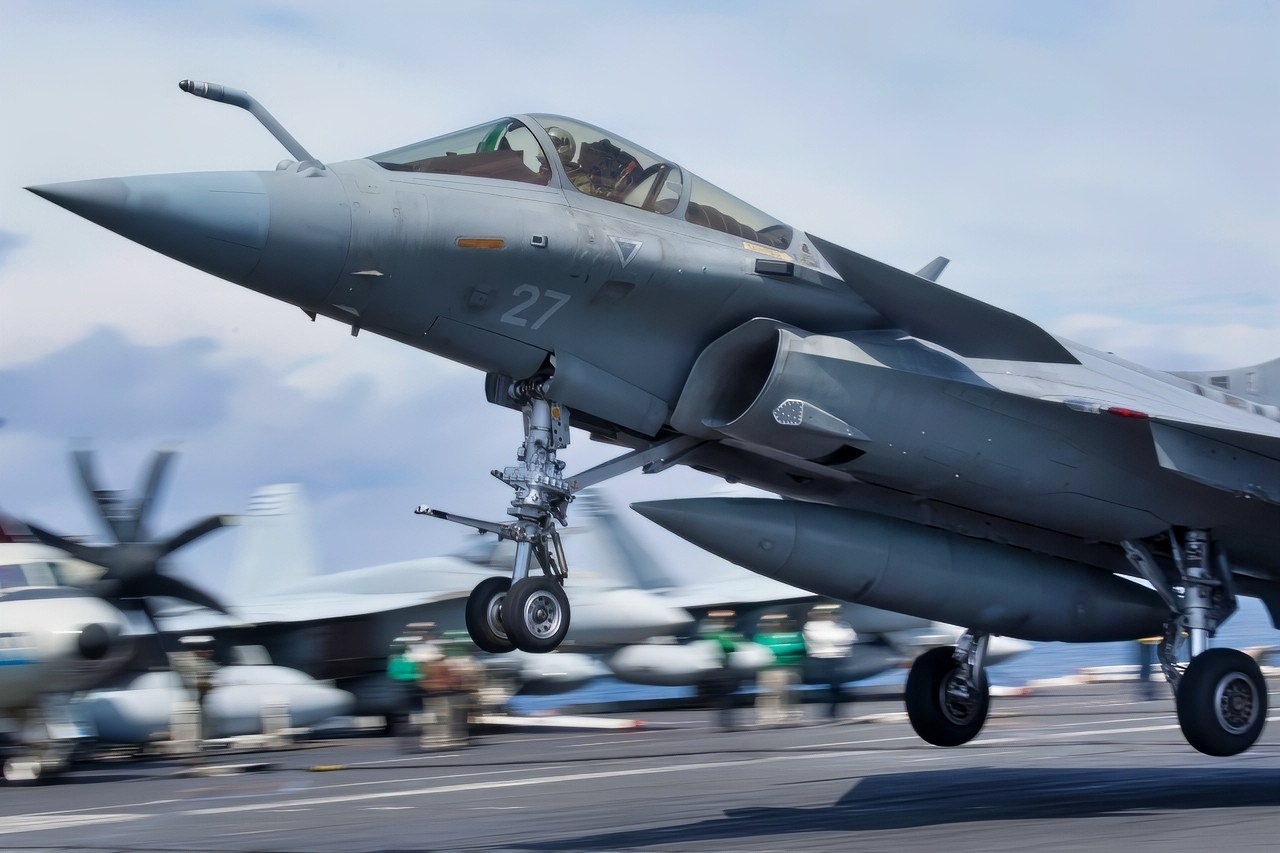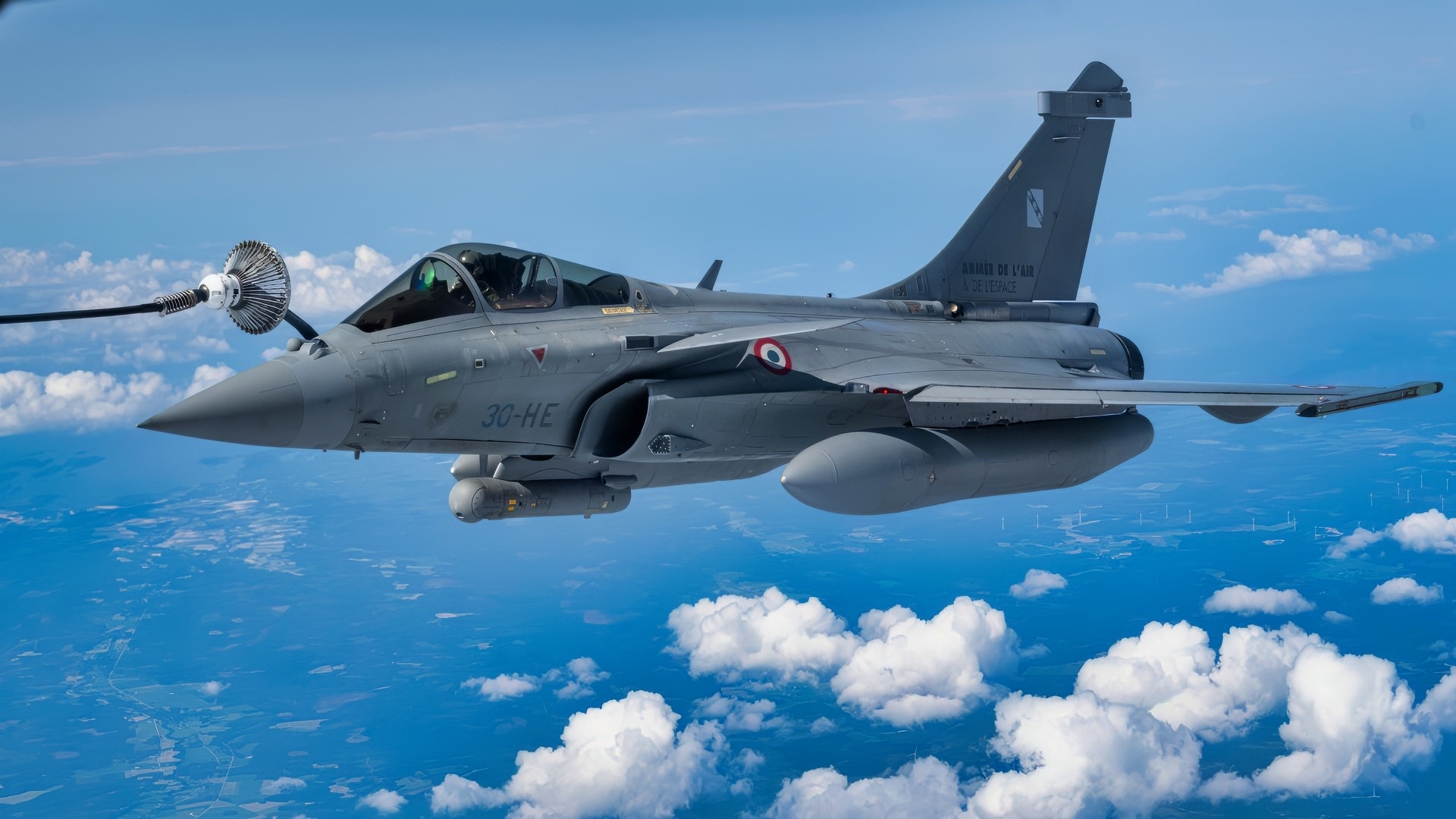Key Points and Summary – Ukraine’s headline-grabbing deal to acquire up to 100 Rafale fighters from France is less a plan to win the current war than a bet on the post-war future.
-With France’s production line already busy and deliveries likely stretching deep into the 2030s, only a handful of jets could arrive while the current conflict is still raging.

(July 3, 2018) A French Dassault Rafale M Fighter touches down on the flight deck aboard the Nimitz-class aircraft carrier USS Harry S. Truman (CVN 75). Harry S. Truman is currently deployed as part of an ongoing rotation of U.S. forces supporting maritime security operations in international waters around the globe. (U.S. Navy photo by Mass Communication Specialist 3rd Class Rebekah A. Watkins/Released)
-The real significance is political and strategic: Paris is binding Kyiv to European—specifically French—defense industry, helping Ukraine transition away from Soviet-era aircraft and signaling a long-term security commitment.
-The Rafale deal prepares Ukraine’s next-generation air force more than it alters today’s battlefield.
Why Ukraine’s Rafale Deal Won’t Turn the Tide of the War
On November 17, 2025, Paris hosted a landmark ceremony in which Ukrainian President Volodymyr Zelenskyy and French President Emmanuel Macron signed a letter of intent for Ukraine to acquire up to 100 French-made Rafale fighters over the next decade.
The package also includes drones, SAMP/T air-defense systems, and radars.
At face value, the agreement marks one of the most ambitious Western arms sales pledges yet to Ukraine during its war with Russia.
The timing, scale, and delivery timeline, however, reveal that this isn’t part of a plan to end the war in Ukraine or turn the tide against Russia. Instead, it’s more of a shift in long-term strategy.
Ukraine gets a reliable and proven fighter platform, but those aircraft will only prove valuable, presumably, once the war comes to an end.
The Deal, the Aircraft, and the Intent
The letter of intent signed in Paris sets out a framework for Ukraine to acquire Rafale F4 fighters over the next decade, with deliveries expected to stretch well into the 2030s.
Notably, France’s current production capacity and export backlog mean that rapid delivery to Ukraine is simply impossible – meaning that unless the conflict caused by the 2021 Russian invasion continues well into the next decade, the French fighters are unlikely to have any impact on the outcome of the war.

A French Air and Space Force Rafale C from Mont-de-Marsan, Fighter Regiment 2/30, Normandie-Niémen, receives fuel from a U.S. Air Force KC-135 Stratotanker from the 100th Air Refueling Wing, RAF Mildenhall, England, during exercise Atlantic Trident 25 over Finland, June 26, 2025. Atlantic Trident 25 is a recurring multinational training exercise between the U.S., U.K. and France to train in an interoperable environment, refining operational integration and ensuring Allied forces can seamlessly secure the Euro-Atlantic region. Finland hosted this iteration of the training series for the first time. (U.S. Air Force photo by Senior Airman Christopher Campbell)
At present, the Rafale line is supplying aircraft to several foreign customers, and significantly increasing output would require substantial long-lead investments in both manpower and suppliers.
The result? Officials on both sides acknowledge that only a minimal number of these aircraft will be delivered in the near term – and even those would require extensive training for pilots, ground crews, and maintenance staff.
The Rafale is, after all, one of the most modern multirole fighters from Europe – though it is considered 4.5-generation, not fifth. The Rafale F4 standard includes an AESA radar, improved networking, advanced electronic-warfare systems, and compatibility with a wide range of munitions.
For Ukraine, the appeal of the aircraft lies in moving away from its Soviet-era MiG-29 and Su-27 platforms, which are becoming increasingly difficult to maintain and operate.

MiG-29 Fighter. Image Credit: Creative Commons.
Kyiv has repeatedly stressed the need for Western fighters to be delivered to strengthen its air defenses and improve its precision-strike options, while, crucially, building up a more modern force capable of deterring Russia once the war ends.
The deal follows similar steps Ukraine has taken with other partners, including a letter of intent signed with Sweden to obtain as many as 150 Gripen E/F fighters.
Ukraine is building an air force for the future.
France has been explicit about that reasoning, too.
Macron said that the Rafales would be essential to Ukraine even if a peace agreement were signed tomorrow, arguing that a strong,
Western-equipped air force is necessary to prevent Russia from exploiting any post-war pause. Ukrainian officials have echoed that same view, presenting the deal as part of a long-term strategic transition rather than a short-term solution for the battlefield.
That’s not what this is.
Is France Doing This Deliberately?
If the Rafale deal is not designed to change the course of the war, its most significant value lies in both Ukraine’s long-term security and the political signaling it conveys.
France is using the agreement to position itself as a long-term security partner to Ukraine at a moment when European defense policy is shifting.
After repeated delays in U.S. assistance packages and gridlock in Washington, European governments have begun to confront the possibility that American support likely won’t always be guaranteed – and if it is, it won’t always be timely.
Paris, in particular, has seen an opportunity to shape the post-war security environment by anchoring Ukraine to European defense industries rather than leaving Kyiv dependent solely on American systems.
That’s good for Europe, it’s good for Ukraine, and most of all, it’s good for France.
The Rafale deal also advanced France’s long-standing ambition to lead Europe’s strategic autonomy efforts. Think about it: by tying Ukraine’s future air force to French supply chains, training programs, and maintenance ecosystems, Paris is strengthening its role in Europe’s defense architecture – and establishing its aircraft as a go-to option for new customers.
France is effectively ensuring that the technology, contracts, and industrial dependencies of future aircraft procurement benefit them.
The timing is interesting for France and Ukraine, but for Moscow, it’s practically irrelevant.
What matters to them is the signaling: France is committing itself to the long-term defense of Ukraine regardless of how the current phase of the conflict with Russia ends.
About the Author:
Jack Buckby is a British author, counter-extremism researcher, and journalist based in New York. Reporting on the U.K., Europe, and the U.S., he works to analyze and understand left-wing and right-wing radicalization, and reports on Western governments’ approaches to the pressing issues of today. His books and research papers explore these themes and propose pragmatic solutions to our increasingly polarized society. His latest book is The Truth Teller: RFK Jr. and the Case for a Post-Partisan Presidency.
More Military
JASSM: The ‘Stealth’ Cruise Missile That Keeps Russian Generals Up at Night
The Day a B-2 Stealth Bomber Disintegrated on Takeoff
The U.S. Military’s Superpower Muscles Are Getting Old
The Mach 6.7 X-15 ‘Hypersonic Rocket Plane’ Has a Message for the U.S. Air Force










